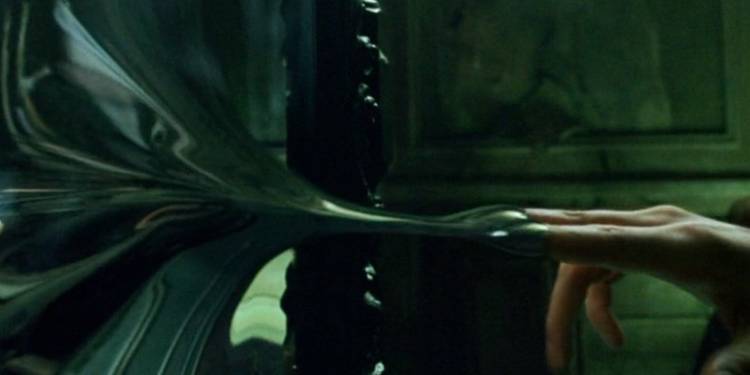This post looks closer into Timothy Morton’s concept of hyperobjects as nonlocal. As I discussed in my previous post, hyperobjects are entities that are massively distributed in time and space, often exceeding human comprehension. Morton calls this massive distribution nonlocality.
In quantum physics, nonlocality refers to the instantaneous connection between two particles regardless of the distance separating them. This nonlocal entanglement defies classical notions of objects, space, and time. Morton borrows this concept to explain that hyperobjects are not confined to a specific location; rather, they exist simultaneously in multiple places and times. This nonlocality means that hyperobjects stretch across distances, past, present, and future. It also implies that our understanding of hyperobjects must be nonlocal. I find that tricky, and applying nonlocality to the Trump narratives helps me understand both nonlocality and the stories better. I hope.
Consider the Trump as King Cyrus story. This story does not exist solely in our present place and time. Rather, it stretches over millennia, something like a fossilized human footprint. It existed already for the ancient Israelites in Babylon, and it stretches across the centuries to echo again in twenty-first century America. Moreover, while its effects are already being felt here and now, its full consequences may well be realized in the future. Moreover, as the story gains traction and resonance within its community, it perturbs countless individuals (believers and nonbelievers alike) and ecosystems (political, social, economic) simultaneously. Thus, the Trump as King Cyrus story exhibits both spatial and temporal nonlocality.Morton’s use of nonlocality is crucial for understanding the elusive nature of hyperobjects such as narratives. It challenges our intuitive understanding of objects as localized things. We want to think of a narrative as a thing – a book in hand, for instance, or in the case of the Trump as King Cyrus story, as a sermon delivered by a beloved pastor this past Sunday or as a blog post we read online. While it is each of these things, it is also all of them and more, including all those countless, indeterminate things of which we are not yet aware. And it is those things yesterday (still yesterday, today), those things today, and those things tomorrow (already those things tomorrow).
Nonlocality invites us to conceive of narratives that are interconnected, distributed, and entangled with the environment in complex ways. This shift in thinking is similar to Morton's shift in how to think about Nature: not as a thing out there, a problem for us to solve sooner or later, but as air in which we live and through which we exist.
Consider this: if a hyperobject is nonlocal, then our understanding of it is also nonlocal. We cannot fully comprehend a hyperobject from a single perspective, at a single point in time, as a single thing. To begin to understand a hyperobject, we must adopt a more interconnected view from inside the hyperobject itself. This is precisely contrary to the usual way of approaching narratives, which work from outside the narrative to define its limits: a story begins here told by this author, in this form, to those particular people, about a particular character and event, for this purpose. It's as if the practiced literary critic is pushing all the muck and slush of an emerging narrative into a coherent lump to mold it into a discreet thing, delineating its form and function and how well they work together to convey the single, focused message of the story. It's as if an author is doing that.
Of course, both authors and critics believe that is what they are doing, and such an effort from the outside has great efficacy and explanatory power. However, this outside-in approach blinds the author, reader, and critic to the nonlocality of the narrative. Only when working from inside the narrative can one push outward, mapping connections from the here and now across realms – gone, now, and yet to come – toward the horizons of what we can see and say, all the while confident that the rhizomatic narrative is always already beyond our horizons, unpredictable and indeterminate, waiting to be mapped, perturbing us anyway.
This nonlocality can be felt even in the here and now. For instance, even before we heard the story about Trump as King Cyrus, we may have felt the perturbations of that narrative, often with the consequence that we are confused. We encounter Trump adherents who appear to almost worship the man with a religious fervor, which is inexplicable for those of us who do not have much or any respect for him. We sense the ripples and hum of the cosmic background radiation of the King Cyrus narrative without actually knowing the story itself. Not only are we entangled with the stories about Trump, but we are entangled with the story of a Persian ruler of 2,600 years ago. That's nonlocal entanglement, or as Einstein called it: spooky action at a distance.

